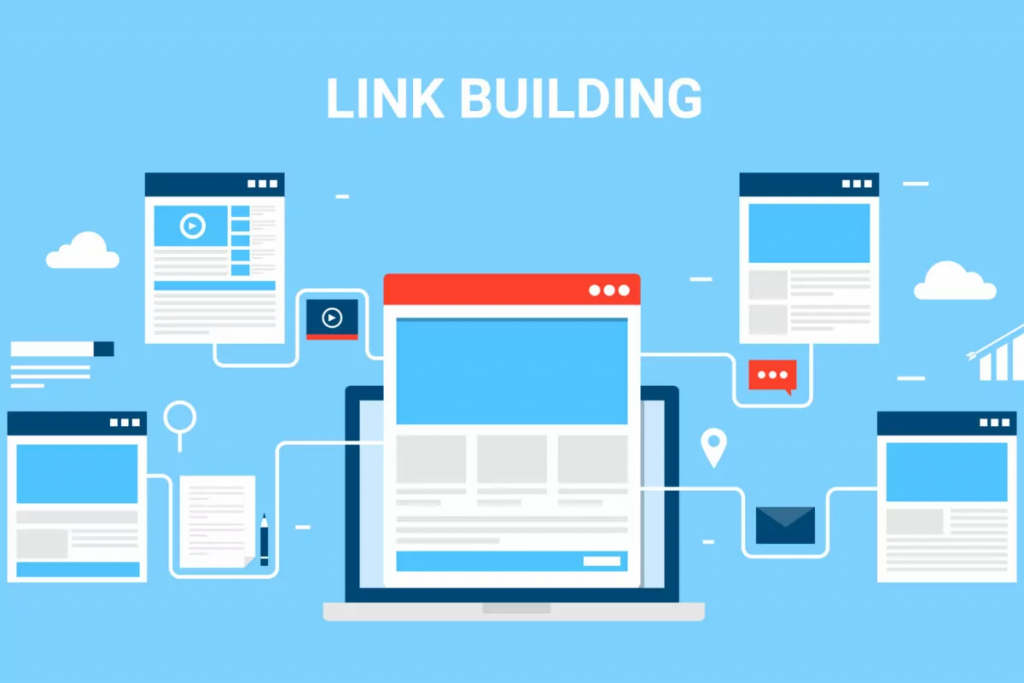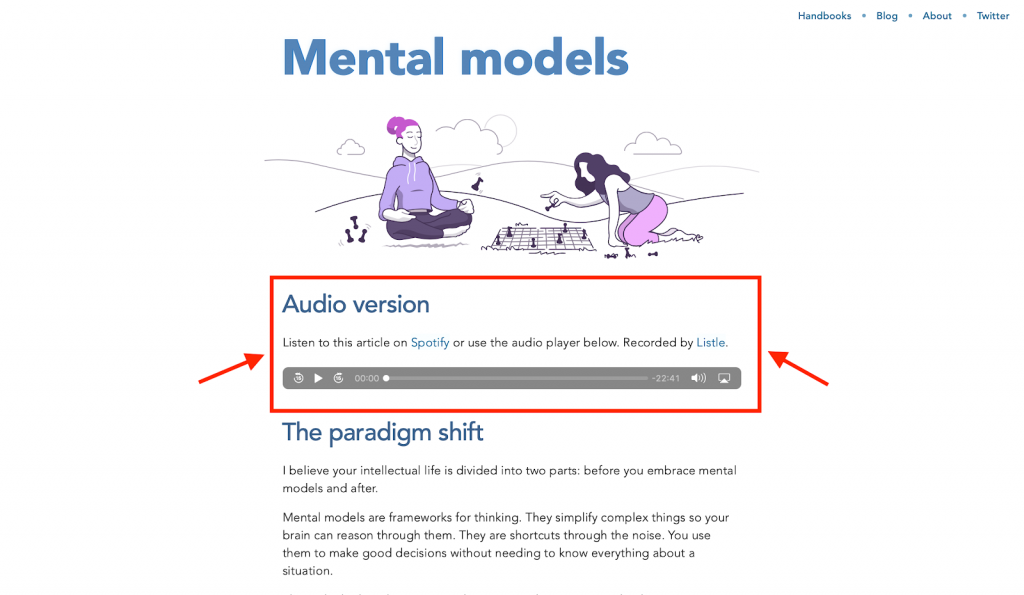How to Build Backlinks Without Creating New Content
Introduction
Backlinks, also known as inbound links, are links from external websites that point to your website. Backlinks are an important part of search engine optimization (SEO) as they signal to search engines that other websites consider your content to be valuable and relevant. In turn, this can improve your website’s search engine rankings and drive more traffic to your site.
However, building backlinks can be a challenge for many website owners. Creating new content that is link-worthy takes time and effort, and not every piece of content will attract backlinks. Additionally, creating new content can be expensive if you need to hire a writer or designer to create it for you.
Fortunately, there are ways to build backlinks without creating new content. In this blog post, we’ll explore some of these strategies and show you how to implement them on your website.
Before we dive into the specific strategies, it’s important to understand why backlinks are so valuable for SEO. When a website links to your site, it’s essentially vouching for the quality and relevance of your content. This is particularly true if the linking website is reputable and has high domain authority.
Search engines like Google take these factors into account when determining the search engine rankings for your website. Essentially, the more high-quality backlinks you have pointing to your site, the more likely it is that search engines will consider your website to be an authoritative source of information on a particular topic.
This, in turn, can help your website rank higher in search engine results pages (SERPs) for relevant keywords and phrases. Higher rankings mean more traffic, which can translate to more leads, sales, and revenue for your business.
It’s worth noting that not all backlinks are created equal. Some backlinks are more valuable than others, depending on factors like the linking website’s domain authority, relevance to your site’s content, and the anchor text used in the link.
That said, any backlink is better than no backlink. Even if the linking website isn’t the most authoritative or relevant, it still sends a signal to search engines that your content is worth linking to. Over time, these signals can add up and improve your site’s overall SEO performance.
In the next section, we’ll dive into the first strategy for building backlinks without creating new content.
Optimize Existing Content for Backlinks

One of the easiest and most effective ways to build backlinks without creating new content is to optimize your existing content for backlinks. By identifying high-performing content on your site and optimizing it for backlinks, you can attract more links to your site and improve your SEO performance.
Here's how to get started:
Step 1: Identify high-performing content
The first step in optimizing your existing content for backlinks is to identify which pieces of content are already performing well on your site. This could include blog posts, landing pages, product pages, or other types of content.
To identify high-performing content, you can use tools like Google Analytics to analyze metrics like pageviews, time on page, and bounce rate. Look for content that has high engagement metrics and is already attracting a significant amount of traffic to your site.
Step 2: Analyze the existing backlinks
Once you’ve identified your high-performing content, the next step is to analyze the existing backlinks pointing to that content. Use a backlink analysis tool like Ahrefs or SEMrush to identify which websites are linking to your content and what anchor text they’re using.
Look for opportunities to improve the anchor text and the context of the links. For example, if a website is linking to your content with generic anchor text like “click here,” you could reach out to the website and ask if they could update the anchor text to something more descriptive and keyword-rich.
Step 3: Optimize the content for backlinks
After analyzing your existing backlinks, it’s time to optimize the content itself for backlinks. This can include updating the content to make it more valuable and informative, adding new sections or data points, and incorporating internal links to other relevant pages on your site.
You should also consider adding visual elements like images, infographics, or videos to the content. Visual content tends to attract more links than plain text, so this can be an effective way to improve the linkability of your content.
Step 4: Outreach to websites linking to similar content
Once you’ve optimized your content for backlinks, the final step is to reach out to websites that are linking to similar content and ask if they would be willing to link to your updated content as well. You can use tools like Ahrefs or SEMrush to identify websites that are linking to similar content and then reach out to them via email or social media.
When reaching out to websites, make sure to personalize your outreach and explain why your content is a valuable addition to their existing content. You should also make it clear how your content is different or better than what they’re currently linking to.
By optimizing your existing content for backlinks and reaching out to websites that are linking to similar content, you can attract more links to your site without creating new content. In the next section, we’ll explore another strategy for building backlinks without creating new content: repurposing existing content.
Repurpose Existing Content for Backlinks

Another effective strategy for building backlinks without creating new content is to repurpose existing content. This involves taking content that you’ve already created and repackaging it in a different format to attract more links and traffic to your site.
Here are some ways to repurpose existing content for backlinks:
Create Infographics
Infographics are a great way to repurpose existing content and make it more visually appealing. They’re also highly shareable and tend to attract a lot of backlinks. To create an infographic, take a blog post or other piece of content that contains data or statistics and turn it into a visually appealing graphic.
Create Videos
Videos are another effective way to repurpose existing content and attract backlinks. You can turn a blog post or other type of content into a video by creating a script and using images, animations, or stock footage to illustrate your points. You can then share the video on your website and social media channels, and reach out to other websites to see if they would be willing to embed the video on their site and link back to your content.
Create Slideshows
Slideshows are another way to repurpose existing content and make it more visually appealing. You can create a slideshow by taking a blog post or other type of content and breaking it down into individual slides. You can then share the slideshow on your website and social media channels, and reach out to other websites to see if they would be willing to embed the slideshow on their site and link back to your content.
Create Podcasts
Podcasts are becoming increasingly popular, and they’re a great way to repurpose existing content and attract backlinks. You can turn a blog post or other type of content into a podcast by creating a script and recording yourself reading it. You can then share the podcast on your website and social media channels, and reach out to other websites to see if they would be willing to embed the podcast on their site and link back to your content.
Create Ebooks
Ebooks are another way to repurpose existing content and make it more valuable to your audience. You can take a series of blog posts or other types of content and compile them into an ebook that you can offer as a free download on your website. You can also reach out to other websites and offer to give them the ebook to share with their audience in exchange for a backlink to your site.
By repurposing your existing content into different formats, you can attract more backlinks and drive more traffic to your site. It’s important to remember that the key to success with this strategy is to create content that is high-quality, informative, and valuable to your audience. In the next section, we’ll explore another strategy for building backlinks without creating new content: leveraging social media.
Leveraging Social Media for Backlinks
Social media can be a powerful tool for building backlinks to your website. By leveraging your social media presence, you can increase your reach and attract more links to your content.
Here are some ways to leverage social media for backlinks:
Share Your Content on Social Media
Sharing your content on social media is a great way to attract more traffic and backlinks to your site. When you share your content on social media, make sure to include a link back to your site and use relevant hashtags to increase its visibility. You can also tag other users or pages that may be interested in your content to increase its reach.
Engage with Your Audience on Social Media
Engaging with your audience on social media can help you build relationships and increase your reach. When you engage with your audience, make sure to respond to comments and messages in a timely manner, and provide valuable insights and information that can help them. This can help establish you as an authority in your field and encourage others to share and link to your content.
Coordinate with Social Media Influencers
Social media influencers can be a great way to increase your reach and attract more links to your site. Identify influencers in your industry or niche and reach out to them to see if they would be interested in sharing your content with their followers. You can also offer to collaborate on content or provide them with free products or services in exchange for a backlink.
Participate in Social Media Communities
Participating in social media communities can help you build relationships and attract more links to your content. Join relevant groups and forums on social media and engage in conversations and discussions with other users. When appropriate, share your content and ask for feedback or opinions. This can help you establish yourself as a thought leader in your industry and encourage others to link to your content.
Use Social Bookmarking Sites
Social bookmarking sites like Reddit, StumbleUpon, and Digg can be a great way to attract more links and traffic to your site. Share your content on these sites and make sure to use relevant tags and categories to increase its visibility. You can also engage with other users and upvote or comment on their content to build relationships and attract more links.
By leveraging your social media presence, you can attract more links and traffic to your site. It’s important to remember that the key to success with this strategy is to provide valuable content that is relevant and interesting to your audience. In the next section, we’ll explore another strategy for building backlinks without creating new content: leveraging your relationships with other websites.
Leveraging Your Relationships with Other Websites for Backlinks
Building relationships with other websites in your industry or niche can be a great way to attract more backlinks to your site. By collaborating with other websites and providing value to their audience, you can establish yourself as an authority and encourage others to link to your content.
Here are some ways to leverage your relationships with other websites for backlinks:
Guest Blogging
Guest blogging is a popular strategy for building backlinks and establishing relationships with other websites. Identify websites in your industry or niche that accept guest posts and reach out to them with a pitch. Make sure to provide valuable insights and information that can help their audience and include a link back to your site in your author bio.
Link Roundups
Link roundups are a popular feature on many websites and blogs. They typically feature a list of the best content in a particular industry or niche and include links to the original sources. Identify websites in your industry or niche that publish link roundups and reach out to them with your best content. If your content is featured, you’ll receive a valuable backlink and exposure to a wider audience.
Collaborate on Content
Collaborating on content with other websites can be a great way to attract more backlinks and establish relationships. Identify websites in your industry or niche that produce complementary content and reach out to them with a proposal. You can collaborate on blog posts, podcasts, videos, or other types of content and share the final product on both of your websites, with a link back to each other’s site.
Broken Link Building
Broken link building is a strategy that involves finding broken links on other websites and offering to replace them with your own content. Identify websites in your industry or niche that have broken links and reach out to them with a proposal to replace the broken link with your own content. This can help you attract valuable backlinks and establish relationships with other websites.
Testimonials
Providing testimonials for other websites or products in your industry or niche can be a great way to establish relationships and attract backlinks. Reach out to websites or companies that you’ve had positive experiences with and offer to provide a testimonial. If they use your testimonial on their website, they may include a link back to your site.
By leveraging your relationships with other websites, you can attract more backlinks and establish yourself as an authority in your industry or niche. It’s important to remember that the key to success with this strategy is to provide value to others and build genuine relationships. With these strategies, you can build backlinks without creating new content and drive more traffic to your site.
Conclusion
In conclusion, building backlinks is a critical component of SEO and can help you attract more traffic and improve your search engine rankings. While creating new content is a popular strategy for building backlinks, it’s not the only option. By leveraging existing content, social media, and relationships with other websites, you can attract more backlinks and drive more traffic to your site.
To recap, here are the key strategies for building backlinks without creating new content:
- Repurposing existing content
- Updating outdated content
- Leveraging social media for backlinks
- Leveraging your relationships with other websites for backlinks
When implementing these strategies, it’s important to keep in mind the following tips:
- Focus on creating valuable content that is relevant and interesting to your audience.
- Use data and analytics to measure the effectiveness of your strategies and adjust as needed.
- Build genuine relationships with other websites and social media influencers.
- Be patient and persistent – building backlinks takes time and effort.
By following these tips and implementing these strategies, you can build a strong backlink profile and improve your SEO. Remember, the key to success is to focus on providing value to your audience and building genuine relationships with others in your industry or niche.
In conclusion, building backlinks without creating new content is a viable and effective strategy for improving your website’s SEO. With the right approach and tactics, you can attract more traffic, improve your search engine rankings, and establish yourself as an authority in your industry or niche.










Write a Comment